What are you looking for at Aqrani library?
-
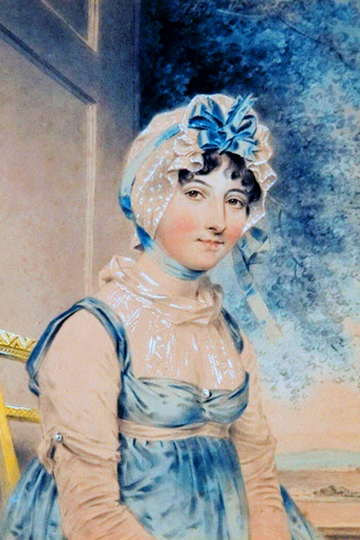
Maria Edgeworth
Maria Edgeworth (1 January 1768 – 22 May 1849) was a prolific Anglo-Irish writer of adults' and children's literature. She was one of the first realist writers in children's literature and was a significant figure in the evolution of the novel in Europe. She held views on estate management, politics and education, and corresponded with some of the leading literary and economic writers, including Sir Walter Scott and David Ricardo. Maria Edgeworth was born at Black Bourton, Oxfordshire. She was the second child of Richard Lovell Edgeworth (who eventually fathered 22 children by four wives) and Anna Maria Edgeworth (née Elers), Maria was thus an aunt of Francis Ysidro Edgeworth. She spent her early years with her mother's family in England, until her mother's death when Maria was five. When her father married his second wife Honora Sneyd in 1773, she went with him to his estate, Edgeworthstown, in County Longford, Ireland.Maria was sent to Mrs. Lattafière's school in Derby after Honora fell ill in 1775. After Honora died in 1780 Maria's father married Honora's sister Elizabeth (then socially disapproved and legally forbidden from 1833 until the Deceased Wife's Sister's Marriage Act 1907). Maria transferred to Mrs. Devis's school in London. Her father's attention became fully focused on her in 1781 when she nearly lost her sight to an eye infection. Returning home at the age of 14, she took charge of her many younger siblings and was home-tutored in law, Irish economics and politics, science, and literature by her father. She also started her lifelong correspondences with learned men, mainly members of the Lunar Society.She became her father's assistant in managing the Edgeworthstown estate, which had become run-down during the family's 1777–1782 absence, she would live and write there for the rest of her life. With their bond strengthened, Maria and her father began a lifelong academic collaboration "of which she was the more able and nimble mind.
-

Marie Bersier
Marie Bersier her maiden name Julie Amélie Hollard. She was born in Paris on 25-07-1831 her father was Henri Louis Gabriel Marc Hollard 1801-1866 who was Doctor of Medicine in Paris III. Professor of natural history and anatomy in Lausanne, Neuchâtel and Poitiers (Vienna). Professor of zoology at the Faculty of Sciences of Montpellier (Hérault) ,his mother Jeanne Marie Henriette Julie Hangard 1806-1880. In 1855 she married Eugène Arthur François Bersier 1831-1889. She had 5 children (Mathilde Julie Louise Bersier, Henri Bersier , Emma Jenny Bersier , Henriette Eugènie Bersier and Paul Antoine Edmond Bersier.
-
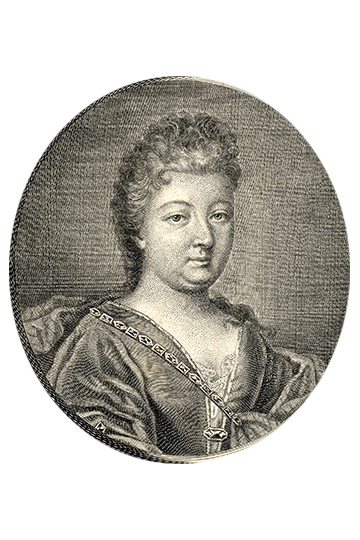
Marie Catherine d'aulnoy
Marie-Catherine Le Jumel de Barneville, Baroness d'Aulnoy (1650/1651 – 14 January 1705), also known as Countess d'Aulnoy, was a French writer known for her literary fairy tales. When she termed her works contes de fées (fairy tales), she originated the term that is now generally used for the genre. D'Aulnoy was born in Barneville-la-Bertran, in Normandy, as a member of the noble family of Le Jumel de Barneville. She was the niece of Marie Bruneau des Loges, the friend of François de Malherbe and of Jean-Louis Guez de Balzac. In 1666, she was given at the age of fifteen (by her father) in an arranged marriage to a Parisian thirty years older—François de la Motte, Baron d'Aulnoy, of the household of the Duke of Vendôme. The baron was a freethinker and a known gambler. In 1669, the Baron d'Aulnoy was accused of treason (speaking out against imposed taxes by the King) by two men who may have been the lovers of Mme d'Aulnoy (aged nineteen) and her mother, who by a second marriage was the Marchioness de Gadagne.
-

Marthe Bertin
Marthe Bertin is a French writer born in 1855, in Amboise (Indre-et-Loire).
-
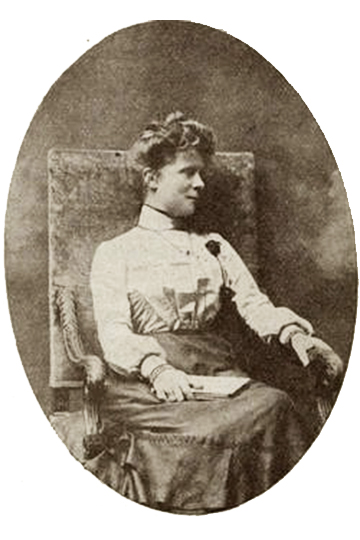
Mathilde Alanic
Mathilde Alanic is a French writer, born on January 10, 1864 in Angers (Maine-et-Loire) and died on October 20, 1948 (at the age of 84) in Angers. She is the daughter of an entrepreneur in the Rue Bressigny in Angers. She was a pupil of Bergson at the Ecole Supérieure des Lettres in Angers. She wrote her first texts at the age of 11, then short stories under the pseudonym of Miranda in the Revue de l'Anjou and Parisian magazines, which allowed her to be noticed. Her first novel, Le Maître du Moulin Blanc, is published in La Petite Illustration of 1898. She then chains about thirty novels, mainly sentimental.
-

Maurice Barrès
Auguste-Maurice Barrès 19 August 1862 – 4 December 1923) was a French novelist, journalist and politician. Spending some time in Italy, he became a figure in French literature with the release of his work The Cult of the Self in 1888. In politics, he was first elected to the Chamber of Deputies in 1889 as a Boulangist and would play a prominent political role for the rest of his life.Barrès was associated in his literary works with Symbolism, a movement which had equivalence with British Aestheticism and Italian Decadentism, indeed he was a close associate of Gabriele d'Annunzio representing the latter. As the name of his trilogy suggests, his works glorified a humanistic love of the self and he also flirted with occult mysticisms in his youth. The Dreyfus affair saw an ideological shift from a liberal individualism rooted in the French Revolution to a more collectivist and organic concept of the nation, advocating for corporatism and an organic society, he also became a leading anti-Dreyfusard popularising the term nationalisme to describe his views. He stood on a platform of "Nationalism and Protectionism".Politically, he became involved with various groups such as the Ligue des Patriotes of Paul Déroulède, which he became the leader of in 1914. Barrès was close to Charles Maurras, the founder of Action Française, a monarchist party. Despite the fact that he remained a republican, Barrès would have a strong influence on various following French monarchists, as well as various other figures. During the First World War, he was a strong supporter of the Union Sacrée political truce. In later life, Barrès returned to the Catholic faith and was involved in a campaign to restore French church buildings and helped establish 24 June as a national day of remembrance for St. Joan of Arc.
-
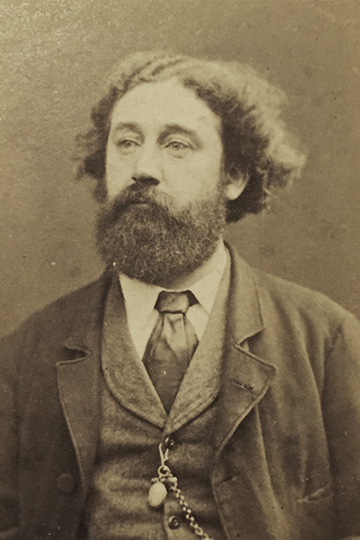
Maurice Joly
Maurice Joly (1829–1878) was a French publicist and lawyer known for his political satire titled Dialogue aux enfers entre Machiavel et Montesquieu ou la politique de Machiavel au XIXe siècle, that attacked the regime of Napoleon III. Available English translations include: Dialogues in Hell between Machiavelli and Montesquieu by Herman Bernstein, and The Dialogue in Hell Between Machiavelli and Montesquieu by John S. Waggoner. Most of the known information about Monsieur Joly is based upon his autobiographical sketch Maurice Joly, son passé, son programme, par lui-même, written at Conciergerie prison in November 1870, where he was jailed for assault at Hôtel de Ville in Paris. Some additional facts are mentioned at Henry Rollin's book L'Apocalypse de notre temps, and in Maurice Joly, un suicidé de la démocratie - a preface to modern publication of Joly's Dialogue aux enfers entre Machiavel et Montesquieu, Épilogue and César - by mysterious F. Leclercq.Joly was born in the small town of Lons-le-Saunier, in the department of Jura, to a French father and an Italian mother. He studied law in Dijon, but stopped in 1849 in order to go to Paris, where he worked as a clerk at various governmental institutions for about 10 years. He successfully completed his legal studies and was finally admitted to the Paris bar in 1859.
-
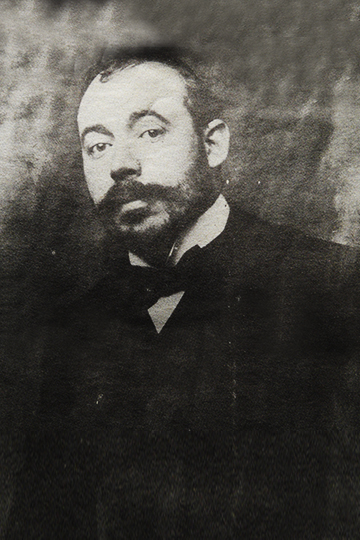
Michel Zévaco
Michel Zevaco (also written as Zévaco) (1 February 1860, Ajaccio - 8 August 1918, Eaubonne) was a French journalist, novelist, publisher, film director, and anti-clerical as well as anarchist activist.Michel Zevaco founded the anarchist weekly magazine Gueux (French, Beggars) on 27 March 1892. A month later he was jailed for 6 months and fined for praising Pini and Ravachol. Afterwards he wrote for Sébastien Faure's journal, Libertaire, as well as for the anarchist newspaper La Renaissance. In 1898, he edited l'Anticlérical, for the Anticlerical League of France and was involved in supporting Alfred Dreyfus during the eponymous Dreyfus Affair.Zevaco's famous cloak and dagger novels, Les Pardaillan, began to be serialized in the daily newspapers in 1900 to great popular success. Yet he is today quite unknown, in spite of the new interest aroused by popular literature.A former school teacher, then an officer, he became a militant journalist, who wrote for various revolutionary newspapers, of anarchist tendency. He became famous mainly for the part he played in the anti-clerical struggles at the end of the 19th century. Then, as a writer of serial novels, he published works which had a great success in Jean Jaurès' daily La Petite République, and he became appointed serial writer for Le Matin from 1906 to his death.His already well-established popularity was made even greater by his promising beginnings as a film-director in 1917. His novels first published by Fayard and Tallandier were republished several times and adapted for the screen, the latest paperback edition only gives a mutilated version, and is impaired by many cuts.He is remembered as the author of Les Pardaillan, Le Capitan, Le Pont des soupirs (Bridge of Sighs), Borgia, Buridan, L'Héroïne, l'Hôtel Saint Pol and Nostradamus, his most famous historical novels, but also published novels related to his times. Some of his serials have not yet been published.
-

Miguel de Cervantes Saave...
Miguel de Cervantes Saavedra 29 September 1547 (assumed) – 22 April 1616 NS) was a Spanish writer widely regarded as the greatest writer in the Spanish language, and one of the world's pre-eminent novelists. He is best known for his novel Don Quixote, a work often cited as both the first modern novel, and one of the pinnacles of literature.Much of his life was spent in poverty and obscurity, many of its details are disputed or unknown, and the bulk of his surviving work was produced in the three years preceding his death. Despite this, his influence and literary contribution are reflected by the fact that Spanish is often referred to as "the language of Cervantes". In 1569, Cervantes was forced to leave Spain and moved to Rome, where he worked in the household of a cardinal. In 1570, he enlisted in a Spanish Navy infantry regiment, and was badly wounded at the Battle of Lepanto in October 1571. He served as a soldier until 1575, when he was captured by Barbary pirates, after five years in captivity, he was ransomed, and returned to Madrid.His first significant novel, titled La Galatea, was published in 1585, but he continued to work as a purchasing agent, then later a government tax collector. Part One of Don Quixote was published in 1605, Part Two in 1615. Other works include the 12 Novelas ejemplares (Exemplary Novels), a long poem, the Viaje del Parnaso (Journey to Parnassus), and Ocho comedias y ocho entremeses (Eight Plays and Eight Entr'actes). Los trabajos de Persiles y Sigismunda (The Travails of Persiles and Sigismunda), was published posthumously in 1616.
-
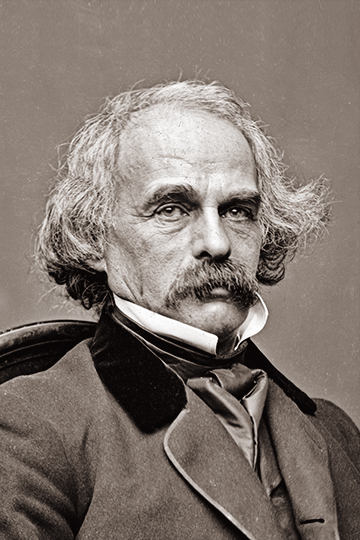
Nathaniel Hawthorne
Nathaniel Hawthorne (July 4, 1804 – May 19, 1864) was an American novelist, dark romantic, and short story writer. His works often focus on history, morality, and religion.He was born in 1804 in Salem, Massachusetts, to Nathaniel Hathorne and the former Elizabeth Clarke Manning. His ancestors include John Hathorne, the only judge from the Salem witch trials who never repented his involvement. He entered Bowdoin College in 1821, was elected to Phi Beta Kappa in 1824, and graduated in 1825. He published his first work in 1828, the novel Fanshawe, he later tried to suppress it, feeling that it was not equal to the standard of his later work. He published several short stories in periodicals, which he collected in 1837 as Twice-Told Tales. The next year, he became engaged to Sophia Peabody. He worked at the Boston Custom House and joined Brook Farm, a transcendentalist community, before marrying Peabody in 1842. The couple moved to The Old Manse in Concord, Massachusetts, later moving to Salem, the Berkshires, then to The Wayside in Concord. The Scarlet Letter was published in 1850, followed by a succession of other novels. A political appointment as consul took Hawthorne and family to Europe before their return to Concord in 1860. Hawthorne died on May 19, 1864, and was survived by his wife and their three children.Much of Hawthorne's writing centers on New England, many works featuring moral metaphors with an anti-Puritan inspiration. His fiction works are considered part of the Romantic movement and, more specifically, dark romanticism. His themes often center on the inherent evil and sin of humanity, and his works often have moral messages and deep psychological complexity. His published works include novels, short stories, and a biography of his college friend Franklin Pierce, the 14th President of the United States.